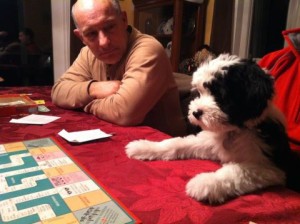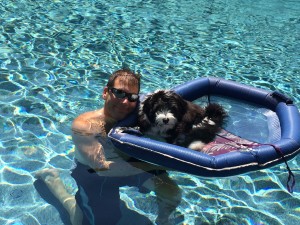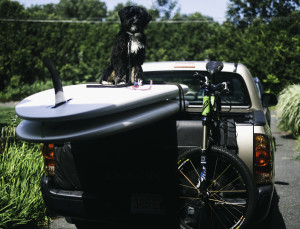
8 November 2019
Ah, where to start? Well, let’s start with some information about potty training and crate training.
Life with your Kensington Tibetan will begin with that first car ride, from my house to your house. Your puppy will be a clean slate who has been well socialized to humans & other dogs – and exposed to many household & travel situations – and environmental noises. He or she will have started crate training and will have slept in the crate overnight for at least two weeks, starting with several puppies in a crate and then, down to solo sleep. The crate is a wonderful thing and a constant in an animal’s life that will ease boarding, travel and any overnight vet visits, should that ever be necessary. I require that you crate train your animal, as it sets the animal up for success, especially with potty training.

In the beginning, you or someone will need to be with the puppy 24/7 for at least the first week. This is being kind to the puppy and will be good for you, as you’ll need time to figure things out and develop your own routine. If you have multiple people in your household, you’ll need to clearly define roles and responsibilities among the players.

Hopefully, in the beginning, the puppy will wake only once that first night to pee and then, sleep until 6am. You’ll have a new baby in the house! The first couple of weeks require more attention and consistency of schedule. You will want to take your puppy outside to do peeps and poops MORE frequently than you even think the puppy might need, because you want to stay ahead of the situation where the puppy really NEEDS to pee and just squats. That way, there will be LOTS of praise and the puppy just might make the connection more quickly, between peeing and peeing outside! I used to feel challenged by Koko. She loves her morning walk but doesn’t necessarily feel inclined to pee or poo. And then, when we came inside? She just let it flow and making my expectations clear to her was a challenge! However, motherhood changed that in a SNAP, as mummy dogs want to keep their pens clean, so as not to leave scent and attract predators. Anytime I’ve had a tricky female? That first litter takes care of behaviour modification. ;>)

You may need to remember that you and your puppy are on the same side of this battle – it’s just that communication can be weak in the beginning and neither of you really know the other’s language. As the puppy matures, you will learn to recognize his or her special ‘dance’ . . . and at some point, the puppy will figure out how to connect that you want it to let you know, when it’s time to do both peeps and poops. When that day comes, it may be cause for celebration – but the training is NOT over. Keep your schedule. Use the crate and never let the animal have free reign over your home; not until it is clear that the animal knows how to ask and the value of asking to be let out. Never take potty training for granted!
OK. So, let’s put potty training behind us and talk about exposure to your lifestyle.


I like to consider size, as well as temperament, when pairing a puppy with a forever family. The more active the family, the larger the puppy. The less active the family, the smaller and less gregarious the puppy. I look for self entertaining orientation, if the puppy will be the sole dog in a household with fewer humans. And I keep the most active and precocious puppies for homes with experience raising dogs or for myself. It is not common that I have an older puppy living with me for study who doesn’t end up in my breeding program. But occasionally, I retire older animals (4 or more years of age), so as to keep the size of my pack down and allow myself to bring a new puppy in for study. These older and beautifully trained animals are sometimes available to new forever homes. The cost for all of my Tibetans is the same, regardless of age, and it includes the first eight week veterinary appointment, so that I have each animal that I’ve bred in my personal records with my primary vet.

We have quite a few Kensington TTs who love the water, although the breed is not known for this attribute. They naturally love snow and running – but not swimming. This is where you will need to expose your new puppy to your lifestyle carefully and sensitively, if you’re wanting a constant companion for a variety of activities. Ava went to live with Sage as an older puppy. I was on the fence about bringing her into my breeding program and then, met a wonderful couple who wanted a companion for a TT they already had – and it worked out well. I had Ava spayed and managed the post-surgical care, and Ava now has acres and acres to run, with ponds in which to swim, boat rides in the warm weather and humans of all ages who love her. We use kiddie pools, the hose and the Waterbury Reservoir in summer, to help develop familiarity with water adventures in our warm weather puppies.

Teething is generally over by around six or seven months – but the constant discomfort in a puppy’s mouth can lead to ‘mouthy’ behaviors. These need to be appropriately managed and corrected. Frozen face cloths and frozen cooked loin lamb chops can work wonders. You’ll need to keep an eye on the incisors. Sometimes, the adult tooth will come in before the baby tooth has come out. In those cases? A little gentle daily massage on the puppy incisor can help its release. Whole raw carrots or edible Nylabones are also a great way to encourage the release of a baby tooth that is crowding a new adult tooth.
The puppy stage can last up to 24 months. Tibetan Terriers vary in how quickly they mature emotionally. This is one of the reasons that I like to keep puppies for nine to ten weeks. I want to release an animal who is grounded, happy, inquisitive, sensitive and appropriately confident. You’ll be starting with a clean slate and I will remain available to you for as long as you choose.
After housetraining and after a female’s first cycle, it will soon be time for spaying. I release puppies exclusively with a spay/neuter contract and require that a female go through at least one season, to ensure that her reproductive system is fully developed. Sometimes, the humans miss the season, as Tibetans keep themselves very clean and have minimal discharge, but you might notice increased licking in her privates. Now, there are at least three spaying techniques more analagous to the options for human ladies. Neutering a male is a less invasive procedure but shouldn’t be scheduled before eighteen months and two years, if possible. Testosterone is a valuable hormone for the proper and full 24 month development of skeleton, ligaments and joints in males. We urge you to research the topic, before scheduling this very important procedure. Vets will encourage you to neuter much earlier than I would ever consider, primarily because secondary sex characteristics in large breeds can be problematic. I personally believe that early neutering and the elimination of testosterone in the male, is associated with , improper skeletal formation, joint issues and the increased need for Cosequin, glucosamine and other joint health supplements in later life. There is lots of research correlating 24 months of development with testes intact being associated with proper and full development of ligaments, bones and tendons. And as for secondary sex characteristics like marking? Training requires that every human be alpha over every TT and regardless of gender, consistent clear training will contribute to the development of a well mannered and predictable companion for life. I’ve only ever neutered two of my males and they were neutered at six and eight years of age, including the TT pets I had prior to establishing my own breeding program.
The stage spanning nine to fifteen months, is where you really start to see the personality come out and the animal begin to show its companionship orientation. Once the animal is somewhere between 18 and 24 months, it will have matured into a young adult and now, the fun really begins.

Tibetans love their humans. They were bred for companionship and also love being one of two dogs in a home. And they deserve to be included in much of your home life but I believe in privilege rooms and privilege activities. I think these animals are very smart and they watch to see who gets what – but they aren’t terribly competitive about not getting it, whatever ‘it’ is. Having more than one TT in a household is great for everyone, as long as you can afford the added cost and the additional attention required from you. Most, however, are single dogs living with two or more people and happy as can be.

We have single dogs living with single ladies, couples and families with children. I am not a big fan of children who wave their hands around in the air and run through the house. No puppy will understand this behaviour and will want to play with the child more actively, as though it were a larger dog. It will take an exceptionally attentive non-working parent(s) to manage bringing a puppy into a home with very active young children and I do not encourage this. I feel responsible for the animals I’ve bred and there are other AKC breeds who do better in situations with very active young children, like Golden Retrievers and Bernese Mountain Dogs. Even though Tibetan Terriers are known for their gentility with children, I see no reason to put any animal into that sort of challenging environment.

Adult life is the most wonderful time and after that, the Golden Years. Tibetans often live to 15 or 16 years of age. And as with humans, their quality of health & life depends on the quality of food, activity, veterinary care and minimizing exposure to carcinogenic substances. As you strive to safeguard your child from second hand smoke, you will want to do the same with your dog. Fertilizers, weed killers, Febreze and Swiffer are things you should eradicate from your house. They are associated with today’s higher incidence of canine cancers and birth defects, as well. Live a gentler lifestyle with kinder cleaners and everyone in the home will benefit. You can make your own household spray using 1 part bleach to 29 parts water. If you add 1 part general purpose liquid cleaner like Thieves – you’ll have a wonderful all purpose spray that will kill 99.9% of household germs and leave a fresh fragrance or nothing behind. We strongly endorse Persil (by the Henckels/Miele companies) and pHurity household cleaners – LOVE pHurity’s liquid dish soap and laundry soap, too. I love the Thieves concentrate from Young Living and also? Mrs. Meyer’s products, manufactured by Caldrea (the SC Johnson Company). And I am a huge advocate of professional teeth cleaning for your dog, regardless of the breed. Keeping the teeth clean helps to keep the blood clean – and blood born issues can lead to disease. I have also been using probiotics proactively, since August of 2015. One of my more holistically inclined Vermont vets told me of the research showing correlation between early, consistent and proactive use of probiotics and reduced incidence of dermatological issues and allergies. While our breed isn’t prone to such things, the research led me to try this approach. And now, we have absolutely no mouth odor throughout the pack and that, is a wonderful thing. Woof! I buy Digestive Enhancer from Nature’s Farmacy in Georgia. Availabe on Amazon, too.
You are welcome to ring me up on my cell (781.254.9941) or email me @ wendyll.behrend@gmail.com with any questions you might have about the breed. I won’t be able to answer all of them – but I bet I’ll be able to answer most. ;>)